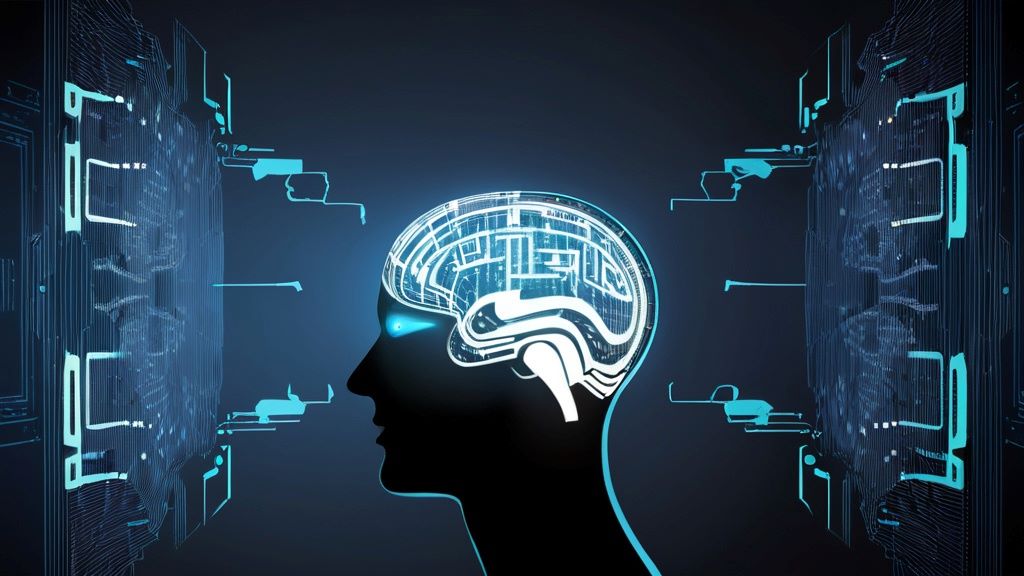In today’s digital age, where data breaches and cyber threats are becoming increasingly sophisticated, the need for robust cybersecurity measures is more pressing than ever. Traditional security methods, while effective to some extent, often struggle to keep pace with the evolving landscape of cyber threats. This is where Artificial Intelligence (AI) comes into play. AI is not only revolutionizing various industries but is also transforming the field of cybersecurity. By leveraging machine learning algorithms, behavioral analytics, and predictive analytics, AI enhances the ability of organizations to protect their data and respond to threats proactively.

The Growing Need for AI in Cybersecurity
- Increasing Cyber Threats: Cyber threats are becoming more frequent and sophisticated, with attackers employing advanced tactics such as phishing, ransomware, and Distributed Denial of Service (DDoS) attacks. According to a report by Cybersecurity Ventures, global cybercrime costs are expected to reach $10.5 trillion annually by 2025. The scale and complexity of these threats necessitate the use of advanced technologies like AI.
- Volume of Data: Organizations generate massive amounts of data every day. Manually analyzing this data to detect anomalies or potential security breaches is impractical. AI can process and analyze vast amounts of data quickly, identifying patterns and anomalies that may indicate a security threat.
- Skills Shortage: The cybersecurity field faces a significant talent shortage, with many organizations struggling to find qualified professionals. AI can help bridge this gap by automating routine tasks and providing valuable insights, allowing cybersecurity teams to focus on more complex issues.
How AI is Transforming Cybersecurity
- Threat Detection and Response: AI enhances threat detection capabilities by analyzing network traffic and user behavior to identify anomalies that may indicate a potential breach. Machine learning algorithms can be trained to recognize normal patterns of behavior, making it easier to spot unusual activities that could signal an attack. For example, if an employee who typically logs in from one location suddenly accesses the system from a different country, AI can flag this as suspicious activity and trigger a security alert.
- Predictive Analytics: Predictive analytics uses historical data and machine learning algorithms to anticipate potential security threats. By analyzing past incidents, AI can identify trends and patterns that indicate where future attacks may occur. This allows organizations to be proactive rather than reactive, implementing security measures before an attack happens.
- Automated Security Processes: AI can automate various security processes, reducing the workload on cybersecurity teams and improving response times. For instance, AI-powered security solutions can automatically block suspicious IP addresses, quarantine infected files, or alert administrators of potential breaches. This automation not only saves time but also helps ensure a quicker response to threats.
- Behavioral Analytics: AI can analyze user behavior to identify deviations from established patterns. By monitoring how users interact with systems and applications, AI can detect unusual behavior that may indicate a compromised account or insider threat. For example, if a user accesses sensitive data outside of normal business hours, AI can flag this behavior for further investigation.
- Enhanced Incident Response: In the event of a security breach, AI can help organizations respond more effectively. AI-driven systems can analyze the nature of the attack, identify compromised systems, and recommend appropriate mitigation measures. This rapid analysis and response can significantly reduce the impact of a cyber incident.
Challenges and Limitations of AI in Cybersecurity
- False Positives: One of the significant challenges of using AI in cybersecurity is the potential for false positives. AI systems may flag benign activities as threats, leading to unnecessary investigations and wasted resources. Fine-tuning algorithms to minimize false positives while maximizing detection accuracy is an ongoing challenge for cybersecurity professionals.
- Adversarial Attacks: Cybercriminals are also leveraging AI to develop more sophisticated attacks. For example, attackers can use machine learning algorithms to create malware that can evade traditional security measures. This arms race between AI-driven security solutions and AI-enhanced cyber threats poses a continuous challenge for organizations.
- Data Privacy Concerns: The use of AI in cybersecurity raises data privacy concerns. Organizations must ensure that they comply with regulations such as GDPR and CCPA while implementing AI solutions. Striking a balance between effective security measures and user privacy is crucial.
- Integration with Existing Systems: Implementing AI solutions in cybersecurity can be complex, particularly for organizations with legacy systems. Integrating AI with existing security frameworks requires careful planning and execution to ensure compatibility and effectiveness.
Best Practices for Implementing AI in Cybersecurity
- Assess Organizational Needs: Before implementing AI solutions, organizations should assess their specific cybersecurity needs and objectives. Understanding the unique threats they face will help them select the right AI tools and technologies.
- Start Small: Organizations should consider starting with pilot projects that focus on specific use cases, such as threat detection or automated response. This approach allows for gradual implementation and helps identify any challenges before scaling up.
- Invest in Training: To maximize the benefits of AI in cybersecurity, organizations must invest in training their staff. Cybersecurity professionals should be equipped with the knowledge and skills to work effectively with AI tools and understand their limitations.
- Continuous Monitoring and Evaluation: AI systems require continuous monitoring and evaluation to ensure effectiveness. Organizations should regularly assess the performance of AI-driven security solutions and make adjustments as needed to improve accuracy and reduce false positives.
- Collaborate with Experts: Collaborating with cybersecurity experts and AI specialists can provide valuable insights and help organizations implement best practices. Engaging with industry professionals can also help organizations stay updated on the latest trends and technologies.
Conclusion
The rise of Artificial Intelligence in cybersecurity marks a significant shift in how organizations approach data protection. With the increasing complexity of cyber threats and the growing volume of data, AI provides essential tools for enhancing security measures. By leveraging AI technologies, organizations can improve threat detection, automate responses, and stay ahead of potential attacks. However, it is crucial to address the challenges and limitations associated with AI in cybersecurity to ensure effective implementation.
As the digital landscape continues to evolve, the integration of AI in cybersecurity will become increasingly vital. Organizations that embrace this transformation will not only enhance their security posture but also foster trust with their customers and stakeholders. By prioritizing cybersecurity in this era of rapid technological advancement, businesses can safeguard their data and maintain a competitive edge in the market.
For further information on AI in cybersecurity, consider exploring resources from reputable organizations such as Cybersecurity and Infrastructure Security Agency (CISA), IBM Security, and Gartner.



